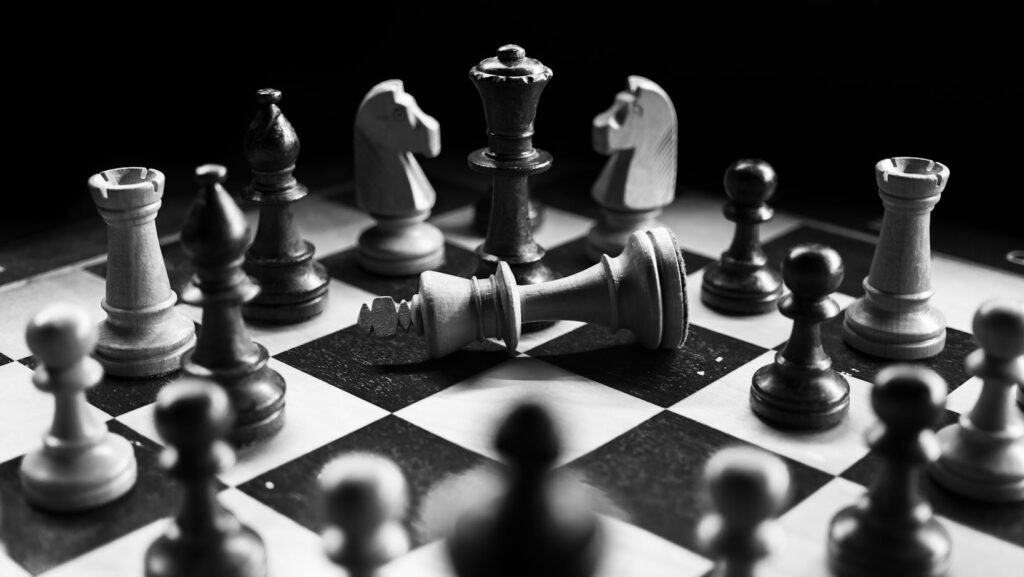In the world of chess, strategic chess move can be the difference between victory and defeat. A well-planned maneuver not only challenges the opponent, but also paves the way for a checkmate. This article delves into the fascinating realm of strategic chess move, providing a glimpse into the minds of grandmasters.
Strategic Chess Move

Strategy in chess denotes long-term planning of moves. It encompasses decision making for the entire game, and is often reflective of a player’s broader understanding of chess principles. Tactics, on the other hand, operate on a shorter timeframe. They include trickeries, traps, and concrete sequences aimed to gain immediate advantages. Examples of tactics include forks, pins, and skewers, which are all about instant decision-making. For a chess player, mastering the blend of strategy and tactics presents a formidable path to victory.
Types of Strategic Chess Move
Opening Strategies
In the initial stage of the game, opening strategies dominate a player’s moves. They are designed with two key objectives in mind: safeguarding the king and controlling the center of the board. Developing pieces rapidly, usually knights and bishops, helps achieve these goals. For example, popular opening strategies include the Sicilian Defense, which begins with the moves e4 c5, and the French Defense, starting with e4 e6. These strategies pave the way for more complex strategic considerations later in the game.
Midgame Moves

After a successful opening phase, players enter the midgame, the most complex and critical phase of a chess match. Midgame strategies often involve positioning major pieces for attack and planning action against opposing forces. Here, strategic understanding comes to the fore, with players needing to anticipate and prepare for possible future scenarios. For instance, the classic Bishop Sacrifice or Greek Gift, where a player offers their bishop to open up the opponent’s king for attack, is a typical midgame strategy.
Endgame Techniques
The endgame transpires when few pieces remain on the board, and the kings become more active. In this phase, endgame techniques focus on utilizing the king as an offensive piece, maintaining pawn structure, and advancing pawns towards promotion. A well-known endgame strategy is the Lucena Position, a method for promoting a pawn when the opponent’s king is in the rook’s path. Its proper execution often leads to victory. Another common technique is the King and Pawn versus King endgame, where accurate play can result in promoting the pawn and checkmating the opponent’s king.
By understanding and implementing these types of strategic chess move, players enhance their skills and overall understanding of the game, boosting their chances of success on the board.
Tips for Improving Your Strategic Play
Studying Classic Games
Immersing oneself in classic games provides valuable insights into various strategies. Classic games, illustrating past grandmasters’ innovative strategies and game-changing maneuvers, serve as excellent study material. Players can discern patterns, identify common strategies, and see how specific moves translate into broader gameplay. For example, they might examine Garry Kasparov’s dynamic, aggressive style, or the positional play of Anatoly Karpov. Not only do classic games showcase different styles, but they also offer a direct look into the application of different strategic concepts in varied contexts.
Practicing Puzzles and Scenarios

Training brains with challenging chess puzzles and scenarios sharpens strategic abilities. Puzzles often present players with particular situations, requiring them to find the best move or series of moves. It’s akin to virtual sparring, probing their ability to strategically navigate specific game scenarios. For instance, tactical puzzles that revolve around pinning, forking, or setting up discovered attacks can enhance one’s skills to apply these strategies in the actual game.
Decoding Strategic Moves in Chess
Strategic chess move are the lifeblood of chess. They’re not just about gaining immediate advantages but also about long-term planning and understanding the game’s broader aspects. Mastering this blend of strategy and tactics can boost critical thinking and overall chess skills. By studying classic games and practicing puzzles, players can sharpen their strategic abilities and enhance their pattern recognition.

